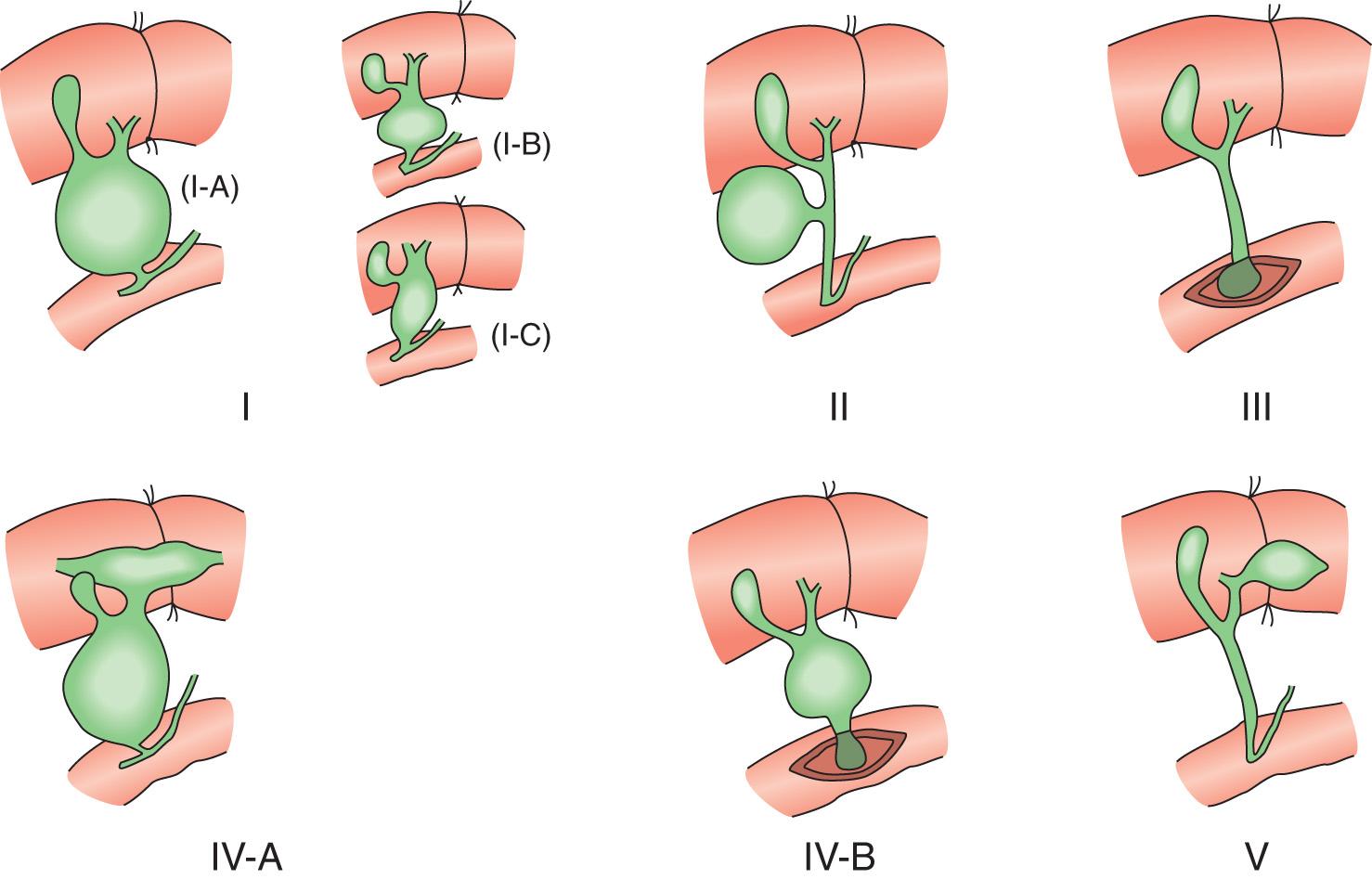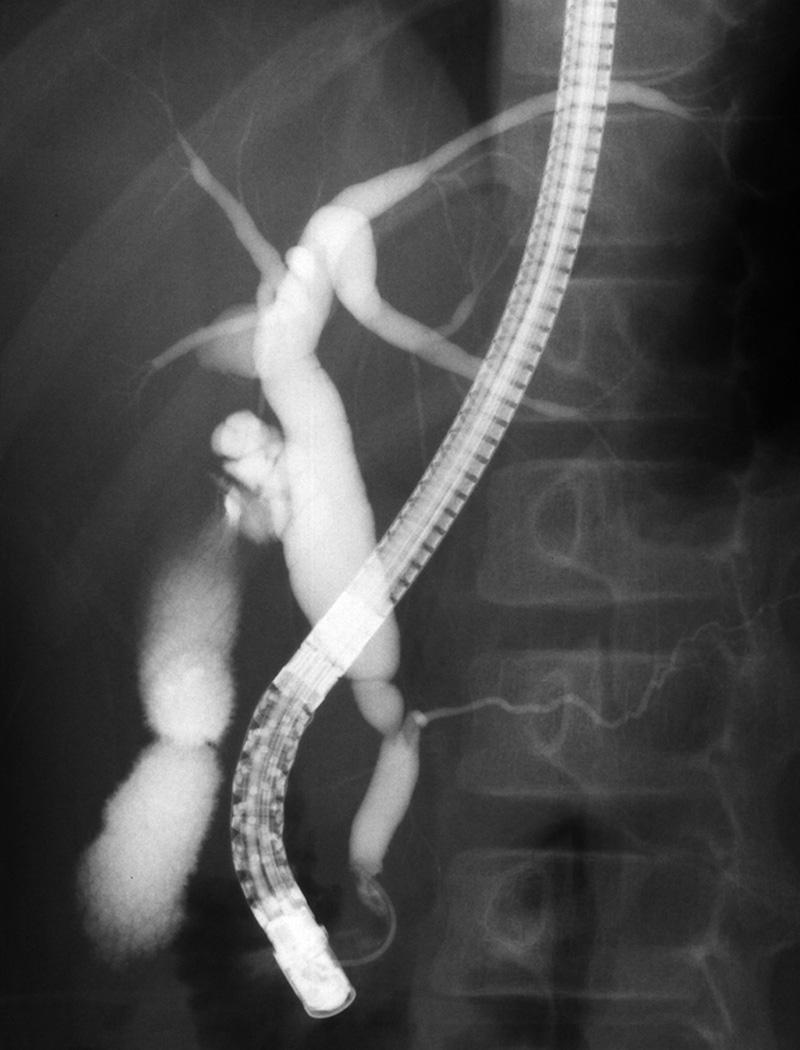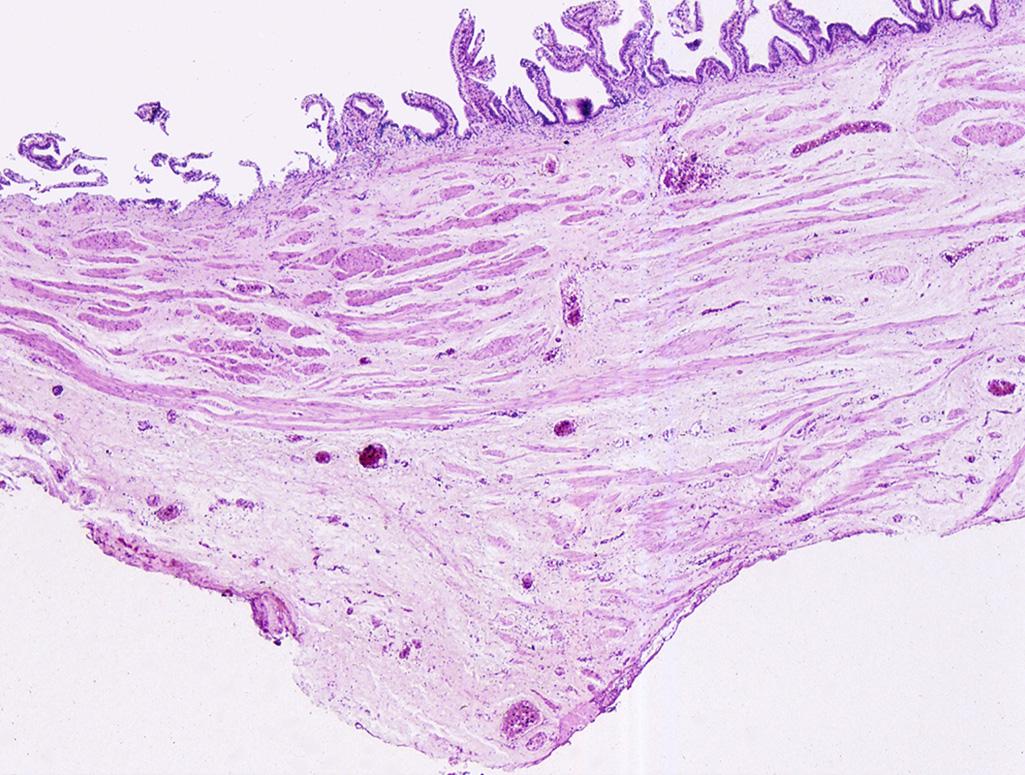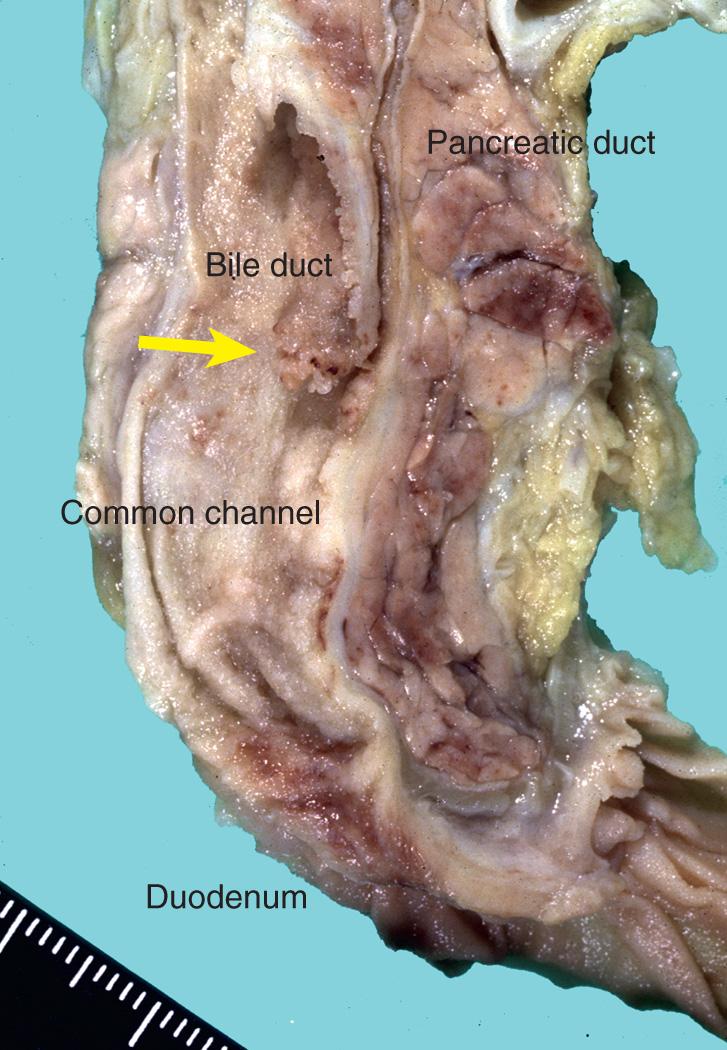Physical Address
304 North Cardinal St.
Dorchester Center, MA 02124
In 1959 Alonso-Lej first classified extrahepatic bile duct cystic dilatation into the following three types: type I is congenital cystic dilatation of the common bile duct in which the intrahepatic tree is usually normal; type II is congenital diverticulum of the common bile duct and is extremely rare; type III is choledochocele, a cystic dilatation of the distal segment of the common bile duct protruding into the duodenal lumen. However, Alonso-Lej's classification did not include intrahepatic bile duct dilatation or pancreaticobiliary maljunction, the abnormal union between the pancreatic and biliary duct. Todani et al. refined the classification of bile duct cystic disorders into five types and included the concept of pancreaticobiliary maljunction ( Fig. 116.1 ). Type IV-A is a congenital biliary dilatation associated with intrahepatic duct dilatation. Type V is multiple intrahepatic bile duct dilatations. Todani type I (except for type Ib) and type IV-A are both accompanied by pancreaticobiliary maljunction in almost all cases, whereas this condition rarely arises in types Ib, II, III, IV-B, or V. The frequencies of the types of bile duct cystic disorders are as follows: type I, 73%; type II, 0.4%; type III, 1.1%; type IV-A, 24%; and type V, 1.1% of patients.

Congenital biliary dilatation used to be known as “congenital choledochal cyst” or “choledochal cyst” in Western countries. The dilated lesion of biliary dilatation used to be called a “cyst.” However, because there are patients who do not present cystic dilatation, this has been referred to as the “dilated part of the bile duct,” and the Japanese Study Group on Pancreaticobiliary Maljunction has recommended the term “congenital biliary dilatation”( Fig. 116.2 ). Congenital biliary dilatation was subdivided into cystic, cylindrical, or fusiform dilatation. However, there is no difference in symptoms, signs, complications, or surgical care among the types.

Congenital biliary dilatation is characterized by localized dilatation of the choledochus and is associated with pancreaticobiliary maljunction. The first description of a fusiform dilatation of the common bile duct was published by Vater in 1723, and the first authentic case of congenital biliary dilatation was reported by Douglas in 1852. On the other hand, pancreaticobiliary maljunction, which was first noted by Kozumi and Kodama in an autopsy case with congenital biliary dilatation in 1916, is a congenital anomaly defined as an abnormal union of the pancreatic and biliary ducts. This initial observation did not attract attention for many years, but the concept has been accepted widely since Babbitt reported the anomaly in 1969.
Congenital biliary dilatation has generally been considered a rarity, but recently the number of cases reported in the literature has steadily increased. The incidence of congenital biliary dilatation in Western countries is 1 in 100,000 to 190,000 live births, whereas it is not uncommon in Asia and a marked increase has been seen in the Japanese population with an incidence of 1 in 1000. The preponderance of female patients is well known, with the female-to-male ratio being 3 or 4 to 1. Congenital biliary dilatation may be found at any age, but more than two-thirds of cases are diagnosed in children younger than 10 years of age, and some cases are diagnosed prenatally by ultrasound examinations as early as the 15th week of gestation.
Many theories have been proposed to explain the origin of bile duct dilatation and can be divided into two groups: (1) that due to an obstructive factor localized at the junction of the choledochus with the duodenum as an abnormal angularity or congenital stenosis of the terminal common bile duct and (2) that due to a weakness originating in the common bile duct proper. In 1936 Yotuyanagi suggested that inequality in the proliferation of epithelial cells of the upper portion and the lower portion of the common bile duct in the primitive stage might produce an abnormally dilated structure following recanalization. However, the mechanism of bile duct dilatation remains uncertain.
On the other hand, pancreaticobiliary maljunction is thought to develop as a misarrangement of the embryonic connections in the pancreaticobiliary ductal system, with the terminal bile duct joined to the second branch of the ventral pancreas. During the development of the bile duct, abnormal fusion may occur between the bile duct and branches of the right ventral pancreatic duct. The site in the bile duct where a branch of the pancreatic duct joins it is likely to develop atresia due to a disturbance of the recanalization process. However, the embryogenesis of pancreaticobiliary maljunction remains obscure because observation of the fetal development of this anomaly is extremely difficult, and there is also a lack of suitable animal models.
The dilated bile duct wall is usually 1 to 2 mm thick and composed mainly of a fibromuscular layer. This layer is made up of dense connective tissue that is fibrocollagenous and sometimes contains smooth muscles and elastic elements ( Fig. 116.3 ). The epithelium is sometimes lacking, but columnar epithelium is identified by gently manipulating the bile duct during surgery. On rare occasion, ectopic pancreatic tissue may be found in the bile duct wall.

The pancreaticobiliary junction is located outside the duodenal wall, where the normal sphincter does not work ( Fig. 116.4 ). This permits reflux of pancreatic juice into the biliary tract and destruction of the bile duct wall. Bile containing regurgitated pancreatic juice has been reported to produce substances hazardous to the biliary epithelium, including activated pancreatic enzymes, lysolecithin, secondary or unconjugated bile acids, and a mutagen. These agents may injure the epithelium of the biliary tract and induce metaplasia and may be a key factor in the pathogenesis of malignant changes in congenital biliary dilatation.

Become a Clinical Tree membership for Full access and enjoy Unlimited articles
If you are a member. Log in here